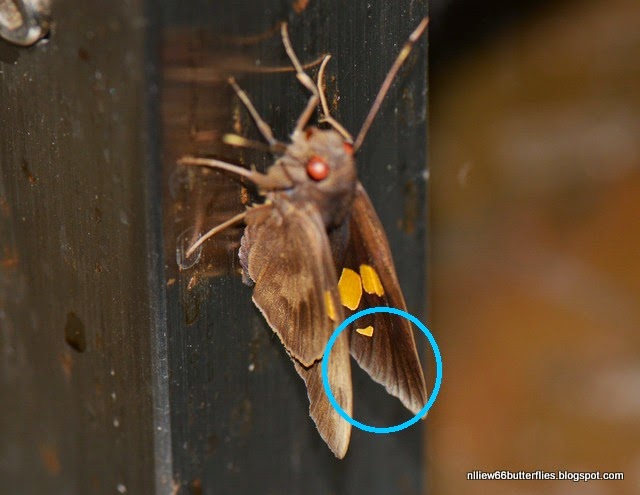Has the same habits of E.torus, though considerably is to be less frequently encountered in the wild because of its crepuscular habits. From observation, less than 20% of collected pupa from infected cultivated and wild banana eclosed E. thrax compared to E. torus. Sometimes referred to as "Acute Banana Skipper" because of the acute termen (straight) in comparison to E. torus.
A worn specimen from the undergrowth of a disturbed forest environment: 31 May 2015 @ 12:16.
A worn specimen from the undergrowth of a disturbed forest environment: 31 May 2015 @ 12:16.
Habitat indicator
RSP
|
WV
|
PG
|
VF
|
FTR
|
SC
|
LWDF
|
LWPF
|
LMEF
|
UMN
|
MN
|
x
|
x
|
Frequency observation chart: (S marks the usual occurence, H marks an unusually high occurence, F for first record)
2014
|
2015
| ||||||||||||
Nov
|
Dec
|
Jan
|
Feb
|
Mac
|
Apr
|
May
|
June
|
Jul
|
Aug
|
Sep
|
Oct
|
Nov
|
Dec
|
S1
|
S1
|
S14
| |||||||||||
|
2016
|
|||||||||||
|
Jan
|
Feb
|
Mac
|
Apr
|
May
|
Jun
|
Jul
|
Aug
|
Sep
|
Oct
|
Nov
|
Dec
|
|
|
|
|
|
|
|
|
|
|
|
|
|
Some ID keys:
Straight termen (acute), white edged on the upperside
Spot 3 triangular (compared to the square spot 3 in E.torus)











No comments:
Post a Comment